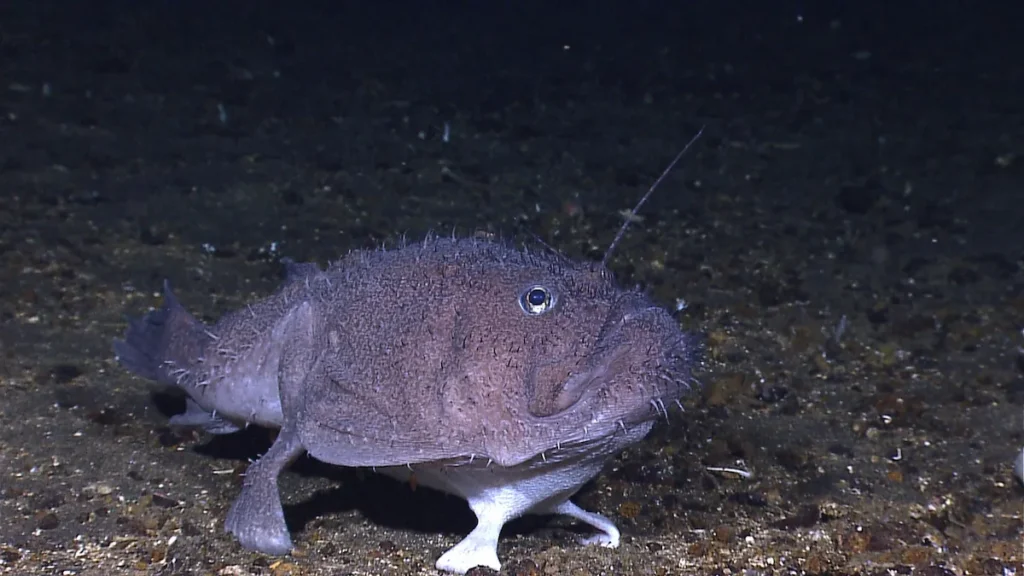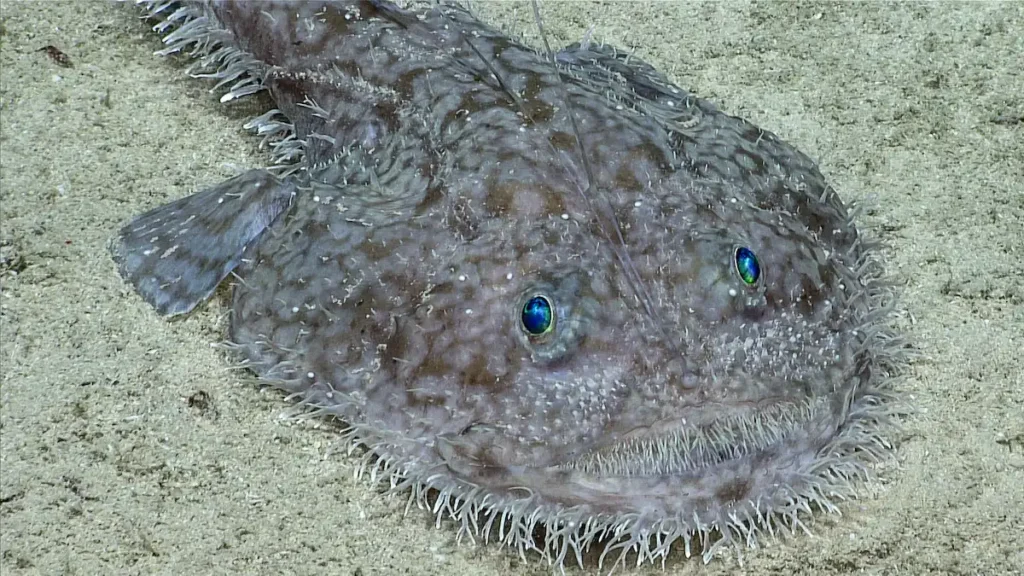You’ve seen the alien-like hagfish, the see-through glass octopus and the slimy snailfish. Just in case you thought ocean animals couldn’t get any weirder, allow me to introduce you to the goosefish.
With a face that only a mother goosefish could love, the goosefish is one of the stranger-looking critters that dwell in the ocean. Read on to learn about what makes goosefish unique—and why you should love them.
Want to learn more about ocean animals?
Sign up to receive our emails.
<!– –>
All in the (goosefish) family
The name “goosefish” refers to a group of fish in the family Lophiidae. There are about 25 species of goosefish around the world, including in the Arctic, Atlantic and Pacific oceans They’re a type of anglerfish, which is the name of another big group that includes more delightfully weird-looking sea creatures like frogfish and footballfish.
Goosefish are easily recognizable by their wide, flat heads and gaping mouths. But just because they’re easily recognizable doesn’t mean they’re easily spotted—their brown, speckled patterns make it easy for them to blend into the seafloor. You can find them on sandy or muddy ocean bottoms at depths of more than 3,000 feet below the ocean surface.

if(typeof window.oc_media_credits === ‘undefined’) {
window.oc_media_credits = {};
}
window.oc_media_credits[67655] = “NOAA Photo Library/ flickr”;
The lurking goosefish
Goosefish are perfectly designed to prey on unsuspecting fish from the seafloor. They will sit quietly there where their camouflaged, flat bodies blend in perfectly into the sand or mud. Then, they will use their dangling “lures”, signature anglerfish features, to entice potential prey to swim close. When they’re ready, the goosefish will lunge forward and snap its massive mouth around its lunch. Unfortunately for the prey, goosefish have many sharp teeth that face inward towards the body, meaning that poor thing has little chance of escape.
Their ambush strategy works on a wide range of prey, and goosefish certainly aren’t picky. They will eat other fish like herring and groundfish, crustaceans like lobster and crab, sea stars and even birds. One study found that goosefish will prey on small Arctic birds called little auks. Little auks are related to puffins and will dive up to 100 feet below the surface to hunt (or, in this case, be hunted).

if(typeof window.oc_media_credits === ‘undefined’) {
window.oc_media_credits = {};
}
window.oc_media_credits[67658] = “NOAA Ocean Exploration/ flickr”;
What’s in a name?
The goosefish family is full of some curious characters, including some that don’t share the goosefish name. Some species are called “anglers,” a reference to the larger group containing goosefish and other types of fish. The spotted anglerfish, for example, is found in the Pacific Ocean and is covered in many dark spots.
There are other types of goosefish that are commonly known as monkfish. You might have come across monkfish before—they’re seen in fish markets around the world. In the United States, the species Lophius americanus is known as the American angler or monkfish (or sometimes, it’s also called a goosefish…what can I say? Common fish names can be really confusing). It’s an important fishery in the Western Atlantic—in 2021, commercial landings in the Northeast United States were valued at more than $10 million.
Smart, sustainable fishery management is important for goosefish and all other fish that rely on a healthy ocean. Learn how Ocean Conservancy is working to find practical solutions to the challenges facing our fisheries. Then, don’t forget to check out our Wildlife Library to learn about other weird and wonderful ocean animals.
The post What is a Goosefish? appeared first on Ocean Conservancy.

